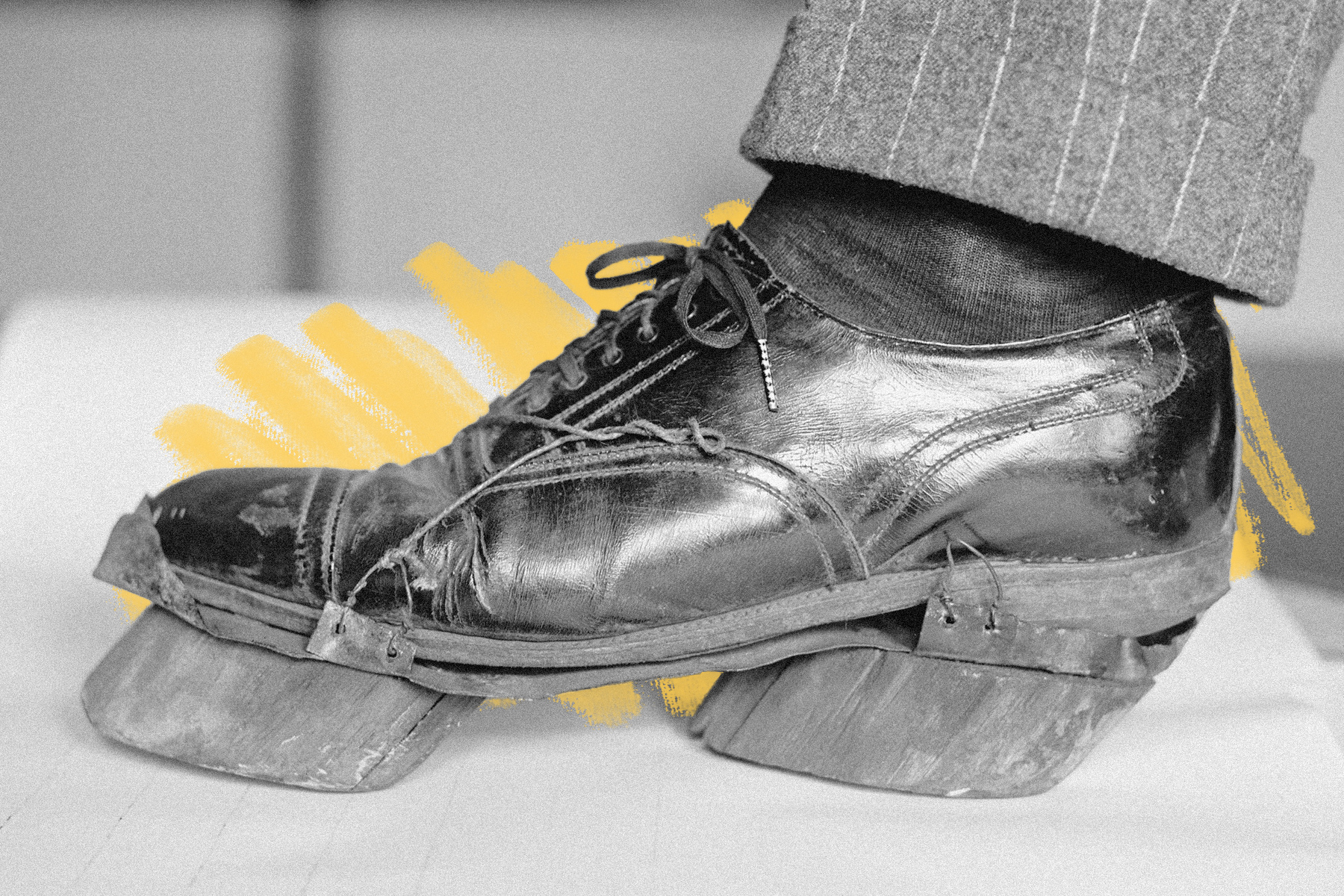Bootleggers wore cow shoes to cover their tracks during Prohibition.
During the Prohibition era in the U.S., the continued demand for alcohol led to a drastic increase in the illegal manufacturing and trafficking of booze. This illicit profession, known as bootlegging, required clever work-arounds to avoid detection from federal officials. One unusual trick that bootleggers turned to was wearing “cow shoes” in an effort to quite literally cover their tracks. The disguise entailed outfitting the soles of normal shoes with wooden blocks that left behind markings that looked like cow tracks instead of shoe prints.
As described in a 1922 article in the Evening Independent of St. Petersburg, Florida, “The cow shoe is… a wooden block carved to resemble the hoof of a cow, which may be strapped to the human foot.” The idea was to make it more difficult for feds to track down hidden bootlegging operations in places such as the middle of the woods, where many crime syndicates set up shop. The simple scheme was rumored to be inspired by a Sherlock Holmes short story called “The Adventure of the Priory School,” in which a criminal uses fake cow tracks to cover up their crimes. By the mid-1920s, however, federal officials had seized some cow shoes and were well aware of the ruse, and so the practice waned in popularity.







